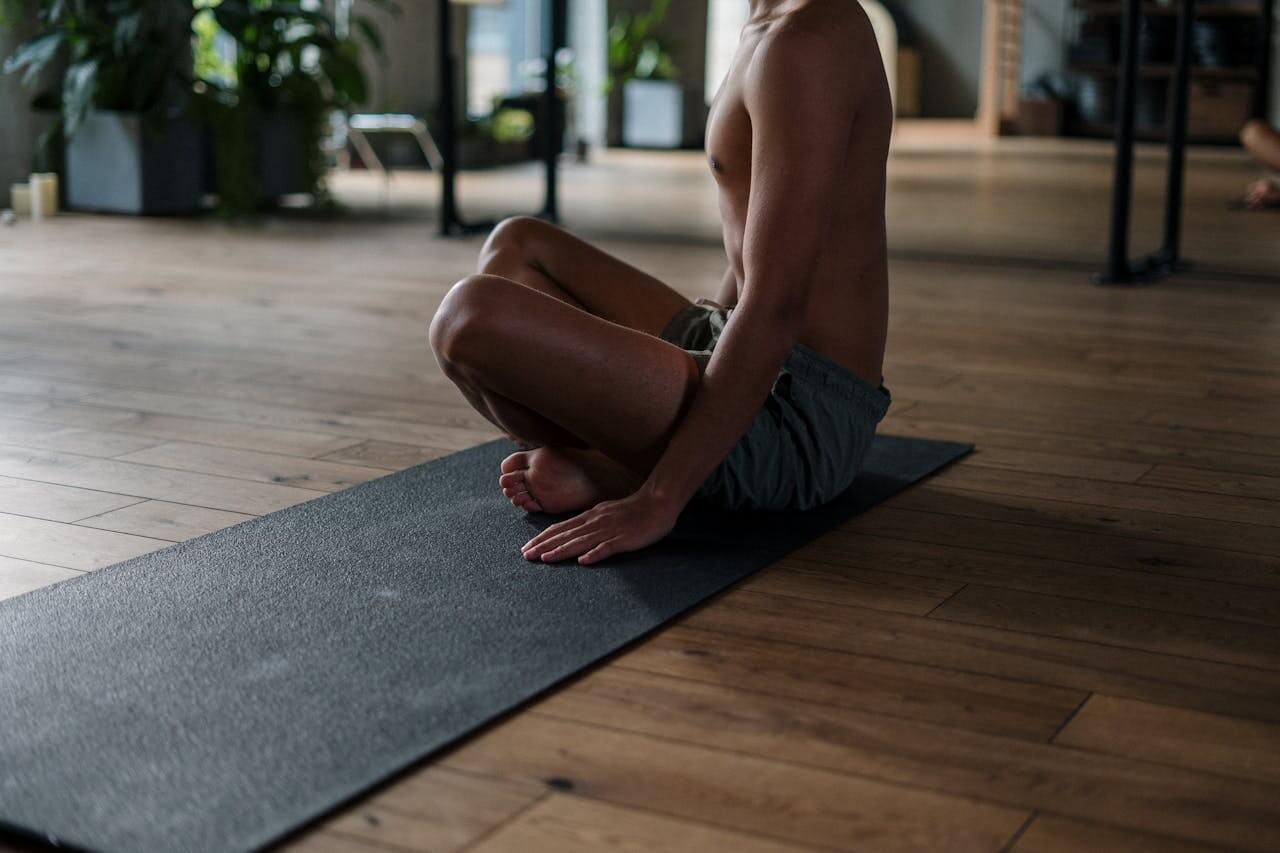Visualisation techniques & how they can support everyday life
In a Nutshell
Visualisation is a powerful mental tool that can help you feel calmer, more focused, and emotionally steady.
Simple techniques like goal imagery, self-compassion visualisation, and nature-based scenes can be practised in just a few minutes each day.
Research shows that visualisation exercises engage the brain in ways similar to real experiences, making them valuable in regulating emotions and building mental resilience.
Visualisation offers a gentle way to pause in the midst of our daily lives. While some people think of it as simply imagining things, a consistent visualisation practice can help you approach your goals in a calmer, more focused, and more confident state.
If you’re preparing for a big day, managing stress, or simply needing a moment to reset, visualisation can offer practical support.
What is visualisation?
Visualisation is the practice of creating mental images, scenes, or sensations, to guide how you feel or behave. Also called “mental imagery,” it taps into your natural ability to imagine things and gives it a purpose, often centred on emotional regulation, easing anxiety, improving focus, and preparing for real-life situations.
How to practice visualisation effectively?
For visualisation to be helpful, it’s important to be intentional with your focus. Here are some ways to get the most out of the practice:
Choose a clear image or intention. Focus on one scene rather than letting your thoughts wander aimlessly.
Engage all the senses. Notice colours, sounds, physical sensations, and even smells or temperature. The more detailed the image, the more immersive it becomes.
Connect with your emotions. Let yourself feel what the image evokes, such as calmness, confidence, relief, or strength.
Stay relaxed. Find a quiet space and a comfortable position. A few deep breaths can help settle your body and mind.
Practise regularly. Like any skill, visualisation improves with consistency. Short daily sessions are often more effective than long and occasional ones.
Be gentle with yourself. If your mind drifts or the image feels unclear, that’s completely normal. Just gently guide your attention back.
Visualisation vs visualisation meditation: Are they the same?
While they both involve mental imagery, visualisation and visualisation meditation are used in slightly different ways.
Visualisation usually involves imagining a specific outcome, event, or goal. It’s future-oriented and often used to mentally rehearse success or build confidence. Athletes, performers, and professionals regularly use this technique.
For example: You picture yourself walking into a meeting with a steady breath and a clear voice, engaging with others confidently and finishing with a sense of calm.
Visualisation meditation, meanwhile, is a form of meditation where your attention rests on an image rather than your breath or body. The goal is not to plan or rehearse, but to stay present with a calming mental scene. This can help reduce stress and shift your emotional state.
Example: You visualise a gentle stream of light moving through your body, softening tension, and bringing a sense of warmth and ease.
Both practices are useful in different ways. You might use visualisation to prepare for a task, and visualisation meditation to settle your nervous system. You can explore both and see what feels right for you.
Related: How to meditate if you’re anxious?
The science behind visualisation
Research shows that imagining an experience can activate many of the same brain regions as physically living through it. This includes areas related to movement, emotion, and sensory processing.
In other words, when you visualise an experience with intention and detail, your brain begins to form connections as if that event were actually happening. This can help reduce anxiety, improve focus, and strengthen habits.
Visualisation has been used in a range of settings, from clinical psychology to sport, with benefits including:
Improved emotional regulation
Reduced symptoms of anxiety and stress
Better focus and mental preparation for tasks
Support with sleep and physical relaxation
Stronger motivation and goal clarity
Visualisation techniques to include in your routines
Visualisation can be used throughout your day, in the morning, during breaks, or before sleep.
You don’t need a "perfect" setting or long stretches of time. Just a few minutes of focused mental imagery is already helpful.
1. Future-self imagery
Visualise yourself after you’ve achieved a personal goal. See the environment, notice how your body feels, and let yourself experience the emotion of reaching that milestone. This helps reinforce motivation and clarity about what you want to achieve.
When to try it: In the morning or before bed
2. Short calming breaks
Imagine a simple, soothing image like a warm light in your chest or a quiet beach with gentle waves. This kind of visual reset can help you unwind during a busy day.
When to try it: During lunch breaks, between meetings, or whenever stress builds
3. Self-compassion imagery
Bring to mind a moment when you’ve felt stressed, self‑critical, or unsure. Now imagine offering yourself the same kindness and understanding you’d extend to a close friend. You might picture a gentle light surrounding you, or hear yourself saying reassuring words like, “I’m doing my best, and that’s enough.”
This simple exercise can help quieten harsh inner thoughts and nurture a more supportive relationship with yourself.
When to try it: During moments of self‑doubt, stress, or emotional heaviness.
4. Nature-based visualisation
Picture yourself walking through a natural space that brings comfort. Notice the textures, sounds, light, and temperature. Let the pace slow and your breathing settle.
When to try it: After work or between tasks
5. Mental rehearsal for challenges
Visualise yourself handling a difficult situation with calmness and confidence. Imagine the steps, your posture, and your internal state. This helps prepare your nervous system to respond rather than react.
When to try it: Before presentations, interviews, or serious conversations
Related: How to be more present?
Final thoughts
Visualisation is a practical and supportive way to improve your focus, emotional awareness, and confidence. With regular practice, it can help you respond more calmly to stress, feel more grounded, and strengthen your sense of direction.
You don’t need to visualise perfectly or see vivid mental pictures for it to work. What matters is your intention and your willingness to practise with care.
Essential Reading
Free Mental Health Tests
FAQs on Visualisation
Some people don’t form strong mental images, and that’s completely fine. Focus on the feeling of the scene, or use sounds and sensations to guide your attention. You can still experience the benefits of visualisation this way.
It can be, but not always. Visualisation often has a goal or specific focus, while meditation usually involves observing the present moment. Both practices can complement each other.
Even a few minutes can make a difference. Many people find 3 to 5 minutes enough to feel a shift. What matters most is consistency.
Yes. Visualising calming scenes or mentally rehearsing a situation can help reduce stress and create a sense of preparedness and emotional safety.
Most people can begin practising visualisation on their own. However, if you have a history of trauma or distressing thoughts, it’s a good idea to check in with a therapist who can tailor the practice for your needs.
Recommended Therapists Available Now
NSW
Clinical Psychologist
I'm qualified as a Clinical Psychologist and I work with a deep respect for the transpersonal. At the heart of my work is an invitation to explore our inner nature and th...More
VIC
Psychologist
Hi! I'm a registered psychologist with a Master's of Psychology from ISN. I work with clients experiencing anxiety, depression, OCD, perfectionism, injury, grief and loss...More
QLD
Psychologist
If youre feeling overwhelmed, anxious, stuck in your head, or disconnected from yourself, youre not alone. Im Casey Barnard, a Psychologist and Health Coach who helps peo...More








